#arthurianaedit
Text
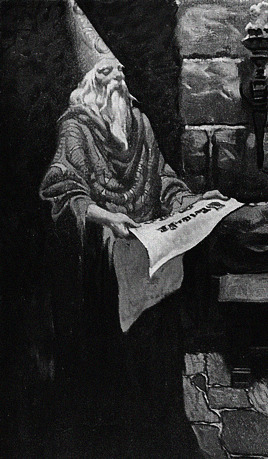

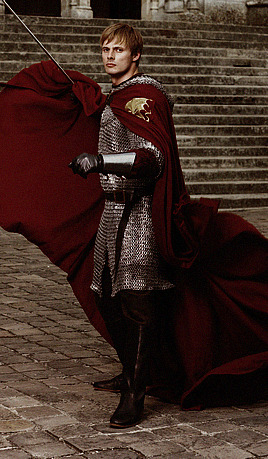

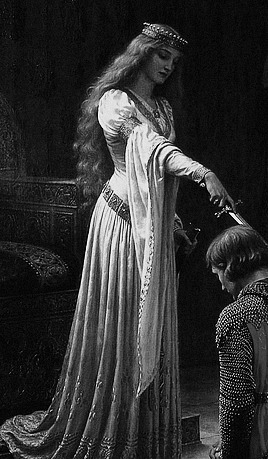
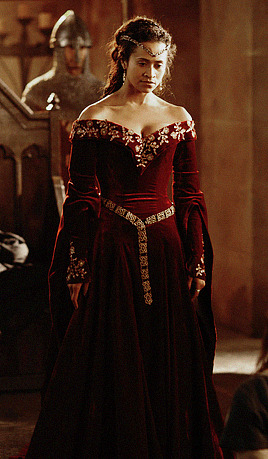


𝔪𝔶𝔱𝔥 vs 𝔪𝔢𝔯𝔩𝔦𝔫
#merlin bbc#bbc merlin#merlinedit#merlin emrys#arthur pendragon#king arthur#guinevere pendragon#queen guinevere#morgana pendragon#morgan le fay#arthuriana#arthurian mythology#arthurianaedit
2K notes
·
View notes
Text

"...for most men are unaware that what is in the power of magicians to accomplish, that the heart can also accomplish by dint of love and bravery."
-Joseph Bédier, The Romance of Tristan and Iseult
The young Tristan ventures to Ireland to ask the hand of the princess Isolde for his uncle, King Mark of Cornwall, and, having slain a dragon that is devastating the country, succeeds in his mission. On the homeward journey Tristan and Isolde, by misadventure, drink the love potion prepared by the queen for her daughter and King Mark. Henceforward, the two are bound to each other by an imperishable love that dares all dangers and makes light of hardships but does not destroy their loyalty to the king.
The greater part of the romance is occupied by plot and counterplot: Mark and the courtiers seeking to entrap the lovers, who escape the snares laid for them until finally Mark gets what seems proof of their guilt and resolves to punish them. Tristan, on his way to the stake, escapes by a miraculous leap from a chapel on the cliffs and rescues Isolde, whom Mark has given to a band of lepers. The lovers flee into the forest of Morrois and remain there until one day Mark discovers them asleep with a naked sword between them. Soon afterward they make peace with Mark, and Tristan agrees to restore Isolde to Mark and leave the country. Coming to Brittany, Tristan marries Isolde of the White Hands, daughter of the duke, “for her name and her beauty,” but makes her his wife only in name. Wounded by a poisoned weapon, he sends for the other Isolde, who alone can heal him. If she agrees to come, the ship on which she embarks is to have a white sail; if she refuses, a black. His jealous wife, who has discovered his secret, seeing the ship approach on which Isolde is hastening to her lover’s aid, tells him that it carries a black sail. Tristan, turning his face to the wall, dies, and Isolde, arriving too late to save her love, yields up her life in a final embrace. A miracle follows their deaths: two trees grow out of their graves and intertwine their branches so that they can not be parted by any means.
The archetypal poem, which has not survived, seems to have been a grim and violent work containing episodes of a coarse and even farcical character. Two adaptations, made in the late 12th century, preserved something of its barbarity. About 1170, however, the Anglo-Norman poet Thomas, who was probably associated with the court of Henry II of England, produced an adaptation in which the harshness of the archetype was considerably softened. A mellifluous German version of Thomas’ adaptation, by Gottfried von Strassburg, is considered the jewel of medieval German poetry. Short episodic poems telling of Tristan’s surreptitious visits to Isolde at King Mark’s court appeared in the late 12th century. Of these, the most important are two versions of the Folie Tristan, in which Tristan is disguised as a fool, and the Luite Tristan, in which he appears as a minstrel. During the 13th century the story—like Arthurian legend—was embodied in a voluminous prose romance. In this, Tristan figured as the noblest of knights, and King Mark as a base villain, the whole being grafted onto Arthurian legend and bringing Tristan and King Arthur’s knight Sir Lancelot into rivalry. This version, which recounts innumerable chivalric adventures of a conventional type, had superseded all other French versions by the end of the European Middle Ages, and it was in this form that Sir Thomas Malory knew the legend in the late 15th century, making it part of his Le Morte Darthur. A popular romance in English, Sir Tristrem, dates from approximately 1300 and is one of the first poems written in the vernacular.
#perioddramaedit#history#edit#history edit#arthurianaedit#arthurian legend#tristan and isolde#tristan & isolde 2008#tristan#isolde#sophia myles#james franco#tristan and iseult#king mark#11th century#romance#le morte d'arthur#mark of cornwell#Joseph Bédier#rufus sewell# The Romance of Tristan and Iseult#medieval legends#medieval literature#literature edit#litedit#literature
148 notes
·
View notes
Photo





What happened to you, Morgana? I thought we were friends.
#merlinedit#bbcmerlinedit#morganaedit#katiemcgrathedit#morgana pendragon#bbcmorgana#mine*#katie mcgrath#merlin#arthuriana#arthurianaedit#userdiana#userjessie#arthurpendragonns#userelena#usermaria#usergeena#bbelcher#bbcemrys#userstream
5K notes
·
View notes
Photo








top ten @modernmythsnet events: [7/10] love
Lancelot and Guinevere - they looked like two flowers, bright enough to turn to each other for sunlight.
#mythedit#mythologyedit#arthurian legend#arthuriana#arthurianaedit#modernmythsnet#fyeahmyths#maddysmythfam#livsmythfam#niasmythfam#yeah santiago just is lancelot for me#very pleased with this one
57 notes
·
View notes
Photo
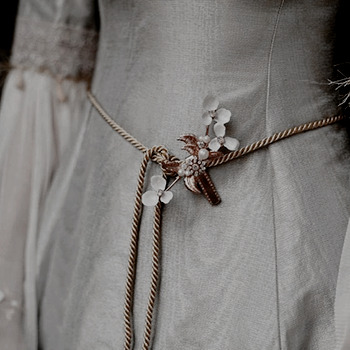
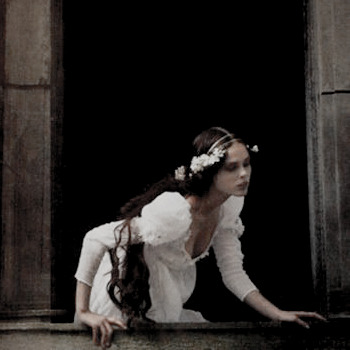







poems ⋯ 𝓉𝒽𝑒 𝓁𝒶𝒹𝓎 𝑜𝒻 𝓈𝒽𝒶𝓁𝑜𝓉𝓉 by alfred, lord tennyson.
❝ "I am half sick of shadows," said
The Lady of Shalott. ❞
795 notes
·
View notes
Photo




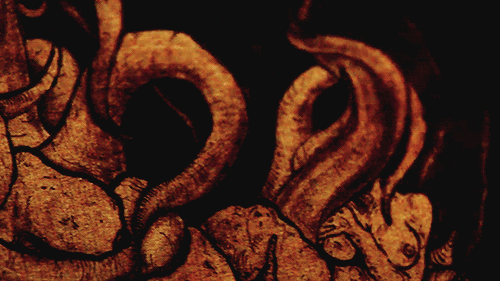





out of the light of a mage's moon
#king arthur : legend of the sword#legend of the sword#kingarthuredit#lotsedit#king arthur 2017#arthuriana#arthurianaedit#arthurian mythology#movies#filmedit#my edits#my gifsets#my gifs#aka my all time favorite movie#arthurianedit#camelot
455 notes
·
View notes
Text



what happened to you?
#arthur pendragon#morgana pendragon#morgana le fay#merlin bbc#bbc merlin#merlinedit#arthurianaedit#arthurian legend
334 notes
·
View notes
Text
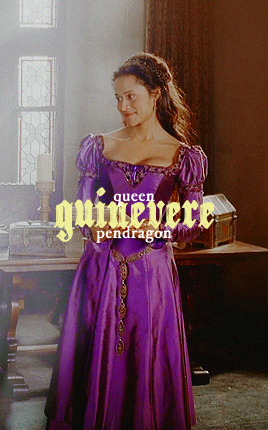





worry is not a wise council.
#guinevere#guinevere pendragon#bbc merlin#merlin bbc#merlinedit#arthurian legend#arthurianedit#arthurianaedit
209 notes
·
View notes
Text

"Leodogran, the King of Cameliard,
Had one fair daughter, and none other child;
And she was fairest of all flesh on earth,
Guinevere, and in her his one delight."
Guinevere is, in Arthurian legend, the wife of King Arthur. In medieval romances, one of the most prominent story arcs is Queen Guinevere’s tragic love affair with her husband’s chief knight, Lancelot. This story first appeared in Chrétien de Troyes’s Lancelot, the Knight of the Cart and became a motif in Arthurian literature, starting with the Lancelot-Grail of the early 13th century and carrying through the Post-Vulgate Cycle and Thomas Malory’s Le Morte d'Arthur. Guinevere and Lancelot’s betrayal of Arthur preceded his eventual defeat at the Battle of Camlann by Mordred. Guinevere has been portrayed as everything from a weak and opportunistic traitor to a fatally flawed but noble and virtuous gentlewoman. In Chrétien de Troyes’s Yvain, the Knight of the Lion, she is praised for her intelligence, friendliness, and gentility, while in Marie de France’s Lanval (and Thomas Chestre’s Middle English version, Sir Launfal), she is a vindictive adulteress, disliked by the protagonist and all well-bred knights. Early chronicles tend to portray her inauspiciously or hardly at all, while later authors use her good and bad qualities to construct a deeper character who played a larger role.
#queen guinevere#lancelot and guinevere#lancelot x guinevere#guinevereedit#guinevere#alexia casiope#arthurian legend#arthurianaedit#arthurianedit#arthuriana#king arthur#lancelot du lac#lancelot#leodogran#cameliard#camelot
37 notes
·
View notes
Text

"And there's no in between
'Cause if I can't have that
Then I would be the leader of the dark
And the bad
Now there's a devil on my shoulder
Where the angels used to be
And he's calling me the queen of mean"
#morgana pendragon#morganapendragonedit#morgana#morgan le fay#arthurian legends#arthurian legend#arthurianaedit#arthuriana#merlin#katie mcgrath#bbc merlin#merlin bbc#merlin edit#katiemcgrathedit
89 notes
·
View notes
Text

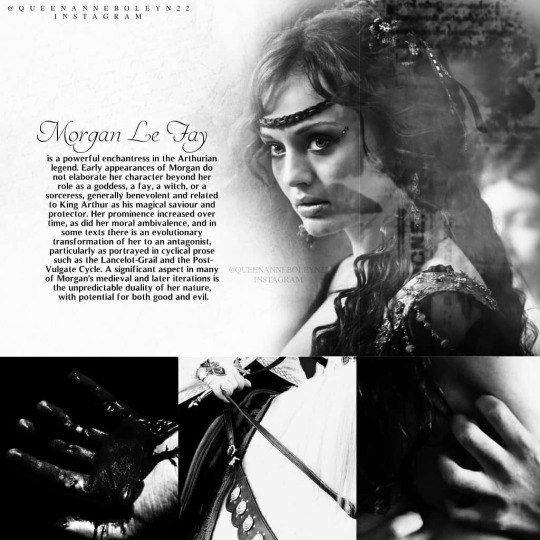
“Morgan Le Fay’s first appearence is in Geoffrey of Monmouth’s Vita Merlini where she is introduced as the most beautiful of nine sisters, a kind and magically talented being who can change her shape. After the battle of Camlann, Arthur voyages to Morgan’s residence on the Isle of Avalon to be healed of his wounds by her special arts. In Chrétien de Troyes and elsewhere, it is suggested that Morgaan is Arthur’s sister. It is thus an ancient and withered Morgan who controls events in the 14th century English poem Sir Gawain and the Green Knight ” - Thelma S. Fenster
#morgan le fay#morgana pendragon#morgana#morgan#sir thomas malory#chretien de troyes#king arthur#arthuriana#arthur pendragon#arthurianaedit#arthurianedit#arthurian mythology#arthurian legend#arthurian literature#arthurian legends#laura haddock#edit#high priestess
68 notes
·
View notes
Text

"What made her beautiful was her hair and her carriage, for she stood as straight as spear and her hair fell around her shoulders like a cascade of tumbling red tangles. That red hair softened her looks, while her laughter snared men like salmon caught in basket traps. There have been many more beautiful women, and thousands who were better, but since the world was weaned I doubt there have been many more so unforgettable as Guinevere, eldest daughter of Leodegan, the exiled King of Henis Wyren. " [― Bernard Cornwell, The Winter King]
#queen guinevere#lancelot x guinevere#guinevereedit#guinevere#lancelot and guinevere#gwen#gwenhwyfar#king arthur#arthuriana#arthurianaedit#arthurian mythology#arthurian legend#ophelia#arthurian edit#edit#camelot#bernard cornwell#the winter king#she owns my heart#daisy ridley ophelia#daisyridleyedit#daisy ridley
69 notes
·
View notes
Text

❀ "ʏᴇᴛ ꜱᴏᴍᴇ ᴍᴇɴ ꜱᴀʏ ɪɴ ᴍᴀɴʏ ᴘᴀʀᴛꜱ ᴏꜰ ᴇɴɢʟᴀɴᴅ ᴛʜᴀᴛ ᴋɪɴɢ ᴀʀᴛʜᴜʀ ɪꜱ ɴᴏᴛ ᴅᴇᴀᴅ, ʙᴜᴛ ʜᴀᴅ ʙʏ ᴛʜᴇ ᴡɪʟʟ ᴏꜰ ᴏᴜʀ ʟᴏʀᴅ ᴊᴇꜱᴜ ɪɴᴛᴏ ᴀɴᴏᴛʜᴇʀ ᴘʟᴀᴄᴇ; ᴀɴᴅ ᴍᴇɴ ꜱᴀʏ ᴛʜᴀᴛ ʜᴇ ꜱʜᴀʟʟ ᴄᴏᴍᴇ ᴀɢᴀɪɴ, ᴀɴᴅ ʜᴇ ꜱʜᴀʟʟ ᴡɪɴ ᴛʜᴇ ʜᴏʟʏ ᴄʀᴏꜱꜱ."
-ᴛʜᴏᴍᴀꜱ ᴍᴀʟᴏʀʏ, ʟᴇ ᴍᴏʀᴛᴇ ᴅ'ᴀʀᴛʜᴜʀ ❀
Inspired by : @katiemcgrath
#king arthur#arthuriana#arthur#king#arthurianaedit#arthurianedit#arthurian mythology#arthurian legend#arthurian literature#arthurian legends#king of britons#edit#fancast#sir thomas malory#arthurian edit
20 notes
·
View notes
Text

ᴋɪɴɢ ᴀʀᴛʜᴜʀ ᴀɴᴅ ʜɪꜱ ᴄʜɪᴅʀᴇɴ:
Ⓖⓦⓨⓓⓡⓔ:
- Gywdre is mentioned in Culhwch and Olwen, where he is killed by the giant boar Twrch Trwyth along with a pair of Arthur’s uncles.
Ⓛⓞⓗⓞⓣ:
-Lohot is in Chrétien's Eric and Enide
He is the Lancelot-Grail as the son of Arthur and Lisanor, helps Arthur free Guenever, and dies in the Dolorous Prison, or was taken by Arthur to Avalon.
ⓜⓞⓡⓓⓡⓔⓓ:
- Mordred is the best known, possibly the son of Morgan and Arthur. Mordred usurped the throne, sometimes married or paired up with Queen Guenever, and killed his father, who simultaneously slew his son.
Ⓛⓛⓐⓒⓗⓔⓤ:
- Llachu is named in Welsh Triads number 4 as one of the "Three Well-Endowed Men of the Island of Britain." In the poem Pa Gur he is a great warrior, and a hero. His death is noted in another early Welsh poem, but the story is unrecorded. These fragments seem to indicate he was once much more important in Welsh legend.
Ⓐⓜⓡ:
- Amr is mentioned in the Welsh Romance “Geraint” as one of Arthur’s four chamberlains. Called Amr, “the son of Arthur the soldier,” in the Historia Brittonum , he is known for his tomb in Ercing, which changes size each time it is measured. Arthur is said to have killed Amr, and buried him there.
#king arthur#arthuriana#arthur pendragon#camelot#edit#history edit#mythology edit#mythology#arthurianaedit#arthurian literature#arthurian legend#arthurian legends#mordred#llacheu#lohot#gwydre#guinevere#amr#knights#merlin#richard madden#david oakes#ben barnes#aneurin barnard#lyonors#morgan le fay#lisanor
65 notes
·
View notes
Text



🌹 𝔖𝔦𝔯 𝔏𝔞𝔫𝔠𝔢𝔩𝔬𝔱 𝔞𝔫𝔡 𝔔𝔲𝔢𝔢𝔫 𝔊𝔲𝔦𝔫𝔢𝔳𝔢𝔯𝔢 🌸💐
"ᴬˢ ˢʰᵉ ᶠˡᵉᵈ ᶠᵃˢᵗ ᵗʰʳᵒ' ˢᵘⁿ ᵃⁿᵈ ˢʰᵃᵈᵉ,
ᵀʰᵉ ʰᵃᵖᵖʸ ʷⁱⁿᵈˢ ᵘᵖᵒⁿ ʰᵉʳ ᵖˡᵃʸ'ᵈ,
ᴮˡᵒʷⁱⁿᵍ ᵗʰᵉ ʳⁱⁿᵍˡᵉᵗ ᶠʳᵒᵐ ᵗʰᵉ ᵇʳᵃⁱᵈ.
ˢʰᵉ ˡᵒᵒᵏ'ᵈ ˢᵒ ˡᵒᵛᵉˡʸ, ᵃˢ ˢʰᵉ ˢʷᵃʸ'ᵈ ᵀʰᵉ ʳᵉⁱⁿ ʷⁱᵗʰ ᵈᵃⁱⁿᵗʸ ᶠⁱⁿᵍᵉʳ⁻ᵗⁱᵖˢ,
ᴬ ᵐᵃⁿ ʰᵃᵈ ᵍⁱᵛᵉⁿ ᵃˡˡ ᵒᵗʰᵉʳ ᵇˡⁱˢˢ,
ᴬⁿᵈ ᵃˡˡ ʰⁱˢ ʷᵒʳˡᵈˡʸ ʷᵒʳᵗʰ ᶠᵒʳ ᵗʰⁱˢ,
ᵀᵒ ʷᵃˢᵗᵉ ʰⁱˢ ʷʰᵒˡᵉ ʰᵉᵃʳᵗ ⁱⁿ ᵒⁿᵉ ᵏⁱˢˢ ᵁᵖᵒⁿ ʰᵉʳ ᵖᵉʳᶠᵉᶜᵗ ˡⁱᵖˢ."
-Alfred Lord Tennyson
#king arthur#arthuriana#arthurian legend#lancelot x guinevere#guinevereedit#guinevere#lancelot du lac#santiago cabrera#alexia casiope#queen guinevere#gwenhwyfar#lancelot and guinevere#alfred lord tennyson#arthurian mythology#arthurianedit#arthurian literature#arthurianaedit
63 notes
·
View notes
Text
"... so full of spirit."

#queen guinevere#lancelot x guinevere#guinevereedit#guinevere#gaia weiss#arthurian legend#arthurianaedit#arthuriana#arthur pendragon#lancelot du lac#edit
42 notes
·
View notes